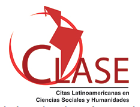Images of the third age: a study of the representation of the elderly aired television advertisements in two Brazilian
DOI:
https://doi.org/10.5433/1679-0383.2012v33n1p91Keywords:
Elderly, Publicity, Discourse analysis, Television.Abstract
This study aims to analyze the speech in two commercials aired by broadcast television, one of the 1990s, and another, from the 2000s, in which the characters are elderly. This study used the references of Discourse Analysis of French Line, which has its precursor Michel Pêcheux. From linguistics seeks to show the changes that occurred in the focus given to the people of the Third Age who were protagonists of the following commercial: Copercap Bamerindus, 1997, Banco Real Talent Contest and Maturity, 2007. Furthermore, it was possible to investigate how the advertising text contributes to changing the way of presenting the aged and also provide insight to what is reflected on the need to educate these people for conscious consumption. Assuming that an advertisement is much more than it appears, concepts of discourse, ideology, production conditions, discursive subject, among others, were seized and applied in an attempt to understand it in its scope and breadth. This analysis found that the elderly in 1997 was presented as weak and passive, and in 2007, as active, capable and with great potential, which should be shown.
Downloads
Downloads
Published
How to Cite
Issue
Section
License
Copyright (c) 2025 Márcia Beatriz da Silva

This work is licensed under a Creative Commons Attribution-NonCommercial 4.0 International License.
Semina: Ciências Sociais e Humanas adopts the CC-BY-NC license for its publications, the copyright being held by the author, in cases of republication we recommend that authors indicate first publication in this journal.
This license allows you to copy and redistribute the material in any medium or format, remix, transform and develop the material, as long as it is not for commercial purposes. And due credit must be given to the creator.
The opinions expressed by the authors of the articles are their sole responsibility.
The magazine reserves the right to make normative, orthographic and grammatical changes to the originals in order to maintain the cultured standard of the language and the credibility of the vehicle. However, it will respect the writing style of the authors. Changes, corrections or suggestions of a conceptual nature will be sent to the authors when necessary.






















